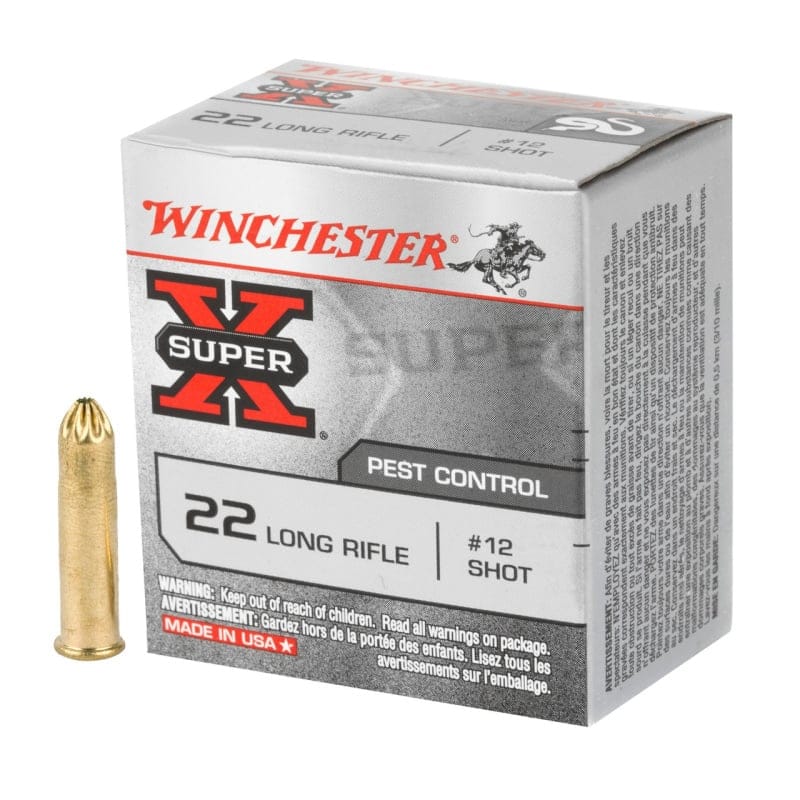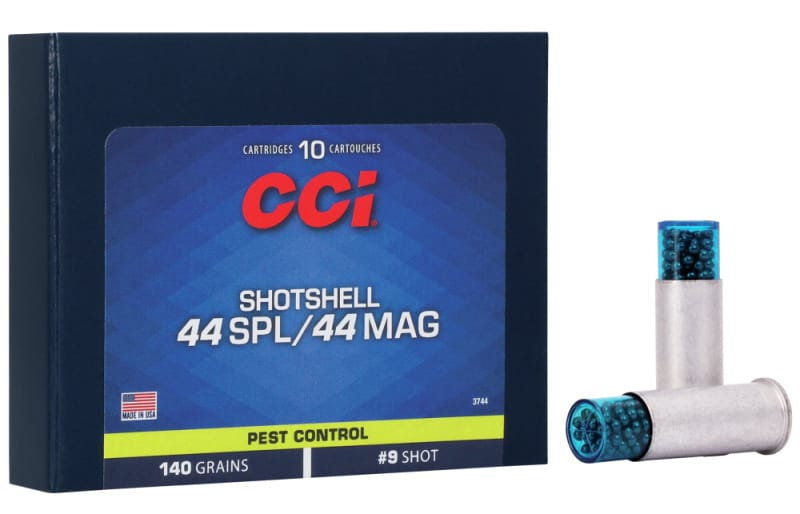If you live in a region plagued by snakes—or visit them now and again—you might have wondered about the usefulness of snake shot. Snake shot can be quite useful when it comes to dispatching rattlesnakes and other potentially dangerous, but tiny creatures. We’ve done the legwork for you by narrowing it down to a selection of snake shot loads in various calibers to help you on your way to pest control where you hunt or live (or both). Check out our top five list, which is written in no particular order.

CCI Rimfire Shotshell .22 LR
Guns chambered in .22 LR are rather popular for handling snakes, whether they’re traditional handguns or derringers (and the occasional long gun). They do require a bit more precise shot placement than larger calibers, but that doesn’t render them ineffective. In fact, .22 LR can be preferable for shooting snakes and other small pests because there’s almost no felt recoil or muzzle rise. Accuracy can then be easier to attain and follow-up shots are far simpler to accomplish with precision and speed.
CCI Rimfire Shotshell .22 LR ammo is considered the gold standard among many, partly due to the fantastic quality of the brand of ammo, and partly because it has a proven history of reliable performance. These rounds have a 31-grain weight and are filled with #12 steel shot. According to CCI, this ammunition produces a muzzle velocity of 1000 fps and delivers reliable, consistent patterns, lethal to most snakes with proper shot placement. Do take note that it’s important to be familiar with how your specific gun patterns with this ammunition in advance. It takes a moment for the pellets to spread, and just how tight that pattern is depends on the gun and the distance at the time.

CCI Pest Control 9mm
As you might have guessed, CCI produces a lot of the snake shot on the market today. These rounds are made for 9mm guns and give you a larger payload than you get with the much smaller 22 LR. They have a 53-grain weight and are filled with #12 steel shot. CCI lists the muzzle velocity of these rounds at 1450 fps, making them a fantastic option for shooters who prefer 9mm for pest control and for those who want one gun that does it all (for example, self-defense and snake defense). Just remember which ammo is in your gun, because you don’t want to find yourself depending on snake shot against a two-legged predator.

Winchester Pest Control Super-X 22 LR
If a lighter weight .22 LR is more your speed for snakes, check out Winchester Pest Control Super-X .22 LR. These 25-grain shot shells are easy to keep on target during rapid fire and cycle reliably. They’re made with brass cases and designated for small game and predator use. Basically, although these shot shells are typically marketed for snakes, they’re effective on other tiny pests such as squirrels and rabbits. Winchester loads them with #12 steel shot, which is a popular size for snake control, and lists them as having a muzzle velocity of 1255 fps, which makes them a bit faster than many other .22 LR snake shot options currently on the market.
Winchester utilizes a star crimp on this snake shot to keep the #12 shot contained. The Super-X line in general has been in the market for more than a century and is well established for stellar performance and reliable results.

Aguila Ammunition .22 LR RATA Pest Control
At 20 grains, this might be the lightest snake shot on the market. That means it travels at greater velocities than some .22 LR snake shot, although it’s not going to produce quite as much energy. Even so, it’s shown itself as brutally effective on venomous snakes. Aguila loads their RATA Pest Control .22 LR with #10 shot, which is a bit larger than #12 shot. That translates to the ability to create larger wound cavities on target which can mean quicker eradication of dangerous pests.
Take the time to try out your snake shot in the gun you’d like to use it with before you find yourself facing a snake. Not all guns handle all ammunition the same way, and it’s important for you to verify the ammo’s performance and reliable cycling in advance of it being needed in a potentially dire situation.

CCI Pest Control Big 4 Shotshell .44 Special
Want to go a little bigger? Here’s the good news: there are larger shotshells available. The CCI Pest Control Big 4 Shotshell in .44 Special is great for revolver lovers and is also quite effective, even if your shot placement isn’t as precise as you’d like. At 110 grains, these loads are significantly larger and heavier than many others which also makes them ideal for larger snakes and assorted pests. Even better, they’re filled with #4 shot, which has far more bulk than #12. If you have the ability to run a .44 Special as your snake gun, these are the shotshells you want.
According to CCI, these shotshells deliver a muzzle velocity of 1000 fps and muzzle energy of 244 ft-lbs. The cartridge cases are manufactured from aluminum, and these are not lead-free rounds. CCI Big 4 ammo gives shooters better range and the ability to effectively stop a venomous threat without the need for quite as much precision as .22 LR demands.
How do you shoot a snake?
Although you might think a headshot is a must for removing the threat of a venomous snake, most body shots work, too, as long as they do enough damage. Regardless of where you shoot a venomous snake, it’s important to understand that they remain venomous and the heads can still do damage, even after the snake’s death. Always use caution when dealing with the head and fangs of a venomous snake and understand the risk isn’t just fang-to-skin contact but any spraying of venom onto your skin or into your eyes. Use care when discarding a snake’s head.
It’s a popular thing to get snake hides made into inserts for holsters or belts, and if you plan to do that it helps to know how to skin a snake. If you’re sending a snake’s entire body to a holster maker, though, you’ll probably be asked to remove and discard the head beforehand. This is a smart safety precaution and one that only takes a moment to accomplish. The same precaution should be taken if you want to remove the rattles as a keepsake: steer clear of the head and fangs, and don’t assume you can’t be hurt anymore just because the snake is technically dead. Finally, get some practice. When the adrenaline is pumping and you’re on edge, aiming and firing accurately can be a challenge. Be sure to practice with your snake shot before you need it. After all, practice makes perfect, right?


